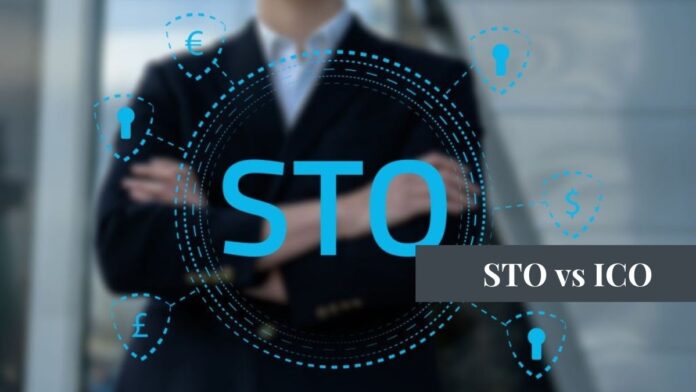In the rapidly evolving world of blockchain and cryptocurrency, new investment opportunities frequently emerge. Two such opportunities are Initial Coin Offerings (ICOs) and Security Token Offerings (STOs). While both involve the issuance of tokens, they differ significantly in their structure, regulatory requirements, and investment potential.
This blog post will provide a comprehensive comparison of STOs and ICOs, exploring their key differences, advantages, and risks. By understanding these aspects, investors can make more informed decisions about where to allocate their resources.
What is an ICO?
Definition and Purpose
An Initial Coin Offering (ICO) is a fundraising method used by blockchain projects to raise capital. In an ICO, a project sells digital tokens to investors in exchange for cryptocurrency (such as Bitcoin or Ethereum) or fiat money. These tokens can represent various things, such as a stake in the project, access to a future service, or a new digital currency.
History and Popularity
ICOs gained popularity in 2017 and 2018 as a way for startups to raise funds quickly and without the regulatory hurdles associated with traditional fundraising methods. During this period, numerous projects launched ICOs, raising billions of dollars in a short amount of time.
Read about: ICO Exit Scams
How ICOs Work
- Whitepaper: The project team publishes a whitepaper outlining the project’s vision, goals, technology, tokenomics, and roadmap.
- Token Creation: Digital tokens are created on a blockchain platform, such as Ethereum.
- Pre-Sale and Public Sale: Tokens are sold to investors during a pre-sale and a public sale. Early investors often receive bonuses or discounts.
- Exchange Listing: After the ICO, the tokens may be listed on cryptocurrency exchanges, allowing investors to trade them.
Advantages of ICOs
- Accessibility: ICOs are open to anyone with an internet connection, allowing a global pool of investors to participate.
- Speed: ICOs can raise significant amounts of capital quickly, sometimes within days or even hours.
- Innovation: By providing funding to innovative projects, ICOs have the potential to drive technological advancements and disrupt traditional industries.
Risks of ICOs
- Lack of Regulation: Many ICOs operate in a regulatory gray area, increasing the risk of fraud and scams.
- Market Volatility: The value of ICO tokens can be highly volatile, leading to significant financial losses for investors.
- Project Failure: Many ICO-funded projects fail to deliver on their promises, resulting in the loss of investor funds.
What is an STO?
Definition and Purpose
A Security Token Offering (STO) is a fundraising method in which security tokens are issued to investors. Unlike ICO tokens, security tokens represent ownership in an underlying asset, such as equity, debt, or real estate. STOs are designed to comply with existing securities regulations, offering a more regulated and transparent investment option.
History and Emergence
STOs emerged as a response to the regulatory challenges and risks associated with ICOs. By offering tokens that are classified as securities, STOs aim to provide greater investor protection and regulatory compliance.
How STOs Work
- Legal Compliance: The project team works with legal experts to ensure that the offering complies with relevant securities regulations.
- Token Creation: Security tokens are created on a blockchain platform that supports compliance features, such as Ethereum or Polymath.
- Offering and Distribution: Tokens are offered to accredited and/or retail investors through a compliant platform. Investors must undergo KYC (Know Your Customer) and AML (Anti-Money Laundering) checks.
- Secondary Market: After the STO, security tokens can be traded on regulated secondary markets, subject to applicable securities laws.
Advantages of STOs
- Regulatory Compliance: STOs comply with existing securities regulations, providing greater investor protection and legal certainty.
- Asset-Backed: Security tokens represent ownership in real-world assets, such as equity or real estate, offering intrinsic value.
- Transparency: The regulatory framework for STOs requires detailed disclosures, enhancing transparency for investors.
Risks of STOs
- Regulatory Complexity: Complying with securities regulations can be complex and costly, potentially limiting access to smaller projects.
- Limited Liquidity: Secondary markets for security tokens are still developing, which may limit liquidity compared to traditional securities or cryptocurrencies.
- Investment Risks: As with any investment, there is a risk that the underlying project or asset may not perform as expected, leading to financial losses.
Key Differences Between ICOs and STOs
Regulatory Framework
ICOs
- Regulation: ICOs often operate in a regulatory gray area, with varying levels of oversight depending on the jurisdiction.
- Compliance: Many ICOs do not comply with existing securities laws, leading to potential legal risks for both issuers and investors.
- Investor Protection: The lack of regulation can result in limited investor protection, increasing the risk of fraud and scams.
STOs
- Regulation: STOs are designed to comply with existing securities regulations, providing a more regulated investment environment.
- Compliance: Issuers must comply with strict regulatory requirements, including registration, disclosure, and reporting obligations.
- Investor Protection: The regulatory framework for STOs enhances investor protection through detailed disclosures and compliance measures.
Token Characteristics
ICO Tokens
- Utility: ICO tokens often represent access to a future service or product, rather than ownership in an asset.
- Value: The value of ICO tokens is largely speculative and depends on the success of the underlying project.
- Transferability: ICO tokens can be freely traded on cryptocurrency exchanges, subject to market demand and liquidity.
Security Tokens
- Asset-Backed: Security tokens represent ownership in a real-world asset, such as equity, debt, or real estate.
- Intrinsic Value: The value of security tokens is derived from the underlying asset, offering a more stable investment compared to utility tokens.
- Regulated Trading: Security tokens can be traded on regulated secondary markets, subject to applicable securities laws and restrictions.
Investor Requirements
ICOs
- Accessibility: ICOs are generally open to all investors, regardless of their accreditation status.
- KYC/AML: Some ICOs implement KYC and AML checks, but these requirements vary widely across projects.
STOs
- Accreditation: Many STOs are limited to accredited investors, depending on the jurisdiction and regulatory requirements.
- KYC/AML: STOs are required to implement strict KYC and AML checks to comply with securities regulations.
Fundraising Process
ICOs
- Simplicity: ICOs typically involve a straightforward fundraising process, with minimal regulatory hurdles.
- Speed: ICOs can raise capital quickly, often within days or weeks.
STOs
- Complexity: STOs involve a more complex and regulated fundraising process, requiring legal compliance and investor verification.
- Timeframe: The regulatory requirements for STOs can extend the fundraising timeframe compared to ICOs.
Investment Potential: ICOs vs. STOs
ICO Investment Potential
High Risk, High Reward
ICOs offer the potential for high returns, but they also come with significant risks. The lack of regulation and investor protection can lead to fraud, project failure, and market volatility. However, successful ICOs can deliver substantial profits, as evidenced by early investors in projects like Ethereum and Binance Coin.
Accessibility and Innovation
ICOs democratize access to investment opportunities, allowing anyone with an internet connection to participate. This accessibility has fueled innovation, enabling startups to raise capital and develop groundbreaking technologies.
STO Investment Potential
Regulatory Assurance
STOs provide greater regulatory assurance, reducing the risk of fraud and enhancing investor protection. The compliance with securities laws and the backing by real-world assets offer a more stable investment compared to ICOs.
Diversification and Stability
Security tokens can represent a wide range of assets, including equity, debt, real estate, and commodities. This diversity allows investors to diversify their portfolios and gain exposure to different asset classes. The intrinsic value of security tokens also offers greater stability compared to speculative ICO tokens.
Comparing Returns: ICOs vs. STOs
ICO Returns
The returns on ICO investments can be highly volatile and speculative. While some ICOs have delivered extraordinary returns, many have failed, leading to significant losses for investors. The lack of regulatory oversight and the speculative nature of utility tokens contribute to this volatility.
STO Returns
STO returns are generally more stable, reflecting the performance of the underlying asset. The regulatory framework and asset backing provide a level of assurance that can attract institutional investors seeking stable and compliant investment opportunities. However, the returns may be lower compared to the high-risk, high-reward nature of ICOs.
Real-World Examples
Successful ICOs
- Ethereum (ETH): Launched in 2014, Ethereum raised $18 million through its ICO. The project introduced smart contracts and became the second-largest cryptocurrency by market capitalization. Early investors saw substantial returns, with the price of ETH increasing exponentially over the years.
- Binance Coin (BNB): Binance, one of the largest cryptocurrency exchanges, launched its ICO in 2017, raising $15 million. BNB tokens were initially used for discounted trading fees on the Binance platform. The value of BNB has surged as Binance expanded its ecosystem, delivering significant returns to early investors.
Successful STOs
- tZERO: tZERO, a subsidiary of Overstock.com, conducted an STO in 2018, raising $134 million. The project aims to create a regulated security token trading platform. tZERO’s compliance with securities regulations and its backing by Overstock.com provided credibility and attracted institutional investors.
. Harbor: Harbor, a platform for tokenizing real estate, conducted an STO in 2019. The project tokenized a $20 million student housing complex, allowing investors to buy security tokens representing ownership in the property. Harbor’s focus on compliance and real-world asset backing showcased the potential of STOs in the real estate sector.
Regulatory Landscape and Future Trends
Evolving Regulations
The regulatory landscape for ICOs and STOs is continuously evolving. Governments and regulatory bodies are developing frameworks to address the unique challenges and opportunities presented by these fundraising methods. Staying informed about regulatory developments is crucial for both issuers and investors.
Global Regulatory Approaches
Different countries have adopted varying approaches to regulating ICOs and STOs:
- United States: The SEC has taken a strict stance on ICOs, considering many tokens as securities. STOs must comply with existing securities regulations, providing greater investor protection.
- European Union: The EU has been working on a comprehensive regulatory framework for digital assets, including ICOs and STOs. The Markets in Crypto-Assets (MiCA) regulation aims to create a harmonized approach across member states.
- Asia: Countries like Singapore and Japan have established clear guidelines for ICOs and STOs, fostering innovation while ensuring regulatory compliance. China, on the other hand, has banned ICOs and is developing its own regulatory framework for digital assets.
Future Trends
- Institutional Adoption: As regulatory frameworks become clearer, institutional investors are likely to enter the STO market, attracted by the compliance and stability offered by security tokens.
- Tokenization of Assets: The tokenization of real-world assets, such as real estate, commodities, and intellectual property, is expected to grow, providing new investment opportunities and enhancing liquidity.
- Interoperability and Standards: The development of interoperability protocols and industry standards will facilitate the integration of security tokens into traditional financial markets, expanding their reach and utility.
Conclusion
Understanding the differences between ICOs and STOs is essential for making informed investment decisions in the blockchain and cryptocurrency space. ICOs offer accessibility and high-reward potential but come with significant risks due to their lack of regulation and speculative nature. In contrast, STOs provide regulatory compliance, asset backing, and greater investor protection, offering a more stable and transparent investment option.
As the regulatory landscape continues to evolve, both ICOs and STOs will play important roles in the future of fundraising and investment. By staying informed about regulatory developments, conducting thorough due diligence, and considering the unique characteristics and risks of each offering, investors can navigate the dynamic world of blockchain investments and seize the opportunities presented by this innovative technology.


























